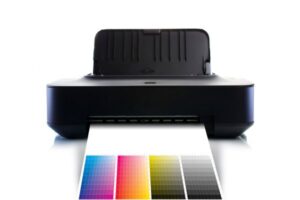Adobe Illustrator is a powerful software tool widely used by designers and artists to create stunning vector graphics. With its extensive range of features and tools, Illustrator offers endless possibilities for creating illustrations, logos, typography, and much more. In this comprehensive guide, we will delve into the capabilities of Adobe Illustrator and explore its various features, workflows, and techniques. Whether you’re a beginner looking to learn the basics or an experienced user seeking to expand your knowledge, this article will provide valuable insights and tips to help you unleash your creativity and maximize the potential of Adobe Illustrator.
Getting Started with Adobe Illustrator
To begin your journey with Adobe Illustrator, it’s important to understand the software’s interface and navigation. Familiarize yourself with the various panels, tools, and menus, and learn how to customize the workspace to suit your preferences. Discover essential shortcuts and techniques to speed up your workflow and gain efficiency. Additionally, explore the different file formats supported by Illustrator and learn how to create new documents or open existing ones. By mastering the basics, you’ll have a solid foundation to build upon as you explore the capabilities of Adobe Illustrator.
Creating and Editing Vector Artwork
One of the primary advantages of Adobe Illustrator is its ability to create and manipulate vector graphics. Dive into the world of vector artwork and learn how to use Illustrator’s shape tools, pen tool, and anchor points to create precise and scalable designs. Understand the concept of paths, strokes, and fills, and explore advanced techniques such as creating compound paths, using the Pathfinder tool, and working with the Appearance panel. Discover how to edit and transform your artwork, apply gradients and patterns, and utilize the powerful Live Paint feature. With Illustrator’s versatile vector tools, you’ll have the freedom to bring your creative visions to life.
Harnessing the Power of Typography
Typography plays a crucial role in design, and Adobe Illustrator provides a comprehensive set of tools to enhance your typographic creations. Learn how to work with text in Illustrator, from basic formatting and styling to advanced techniques such as creating text effects, manipulating paths around text, and applying text on a path. Explore the vast library of fonts available within Illustrator or leverage the integration with Adobe Fonts to access a vast collection of typefaces. Discover how to kern, track, and align your text for optimal legibility and visual appeal. With Illustrator’s robust typography capabilities, you’ll be able to elevate your designs with compelling and impactful text elements.
Mastering Illustrative Techniques
Adobe Illustrator is widely used for creating illustrations, from simple icons to complex artwork. Unleash your creativity and explore various illustrative techniques within Illustrator. Learn how to use the Pen tool to create smooth curves and precise shapes, experiment with the Blob Brush tool for organic illustrations, and discover the power of the Pathfinder and Shape Builder tools for creating unique compositions. Dive into the world of layers and understand how they can be used to organize your artwork and streamline your workflow. Additionally, explore the possibilities of blending modes, gradients, and opacity settings to add depth and dimension to your illustrations. With Illustrator’s versatile illustrative tools, you’ll be able to create captivating and visually stunning artwork.
Working with Colors and Gradients
Colors and gradients are essential elements in design, and Adobe Illustrator provides robust features for working with them. Learn how to create and manage color swatches, utilize the Color Guide panel to explore color harmonies, and experiment with the powerful Recolor Artwork feature to easily modify and adjust colors within your designs. Dive into the world of gradients and discover the Gradient panel, where you can create linear, radial, and freeform gradients with customizable colors and opacity settings. Explore advanced techniques such as creating gradient meshes for more complex and realistic shading effects. With Illustrator’s extensive color and gradient tools, you’ll have the ability to bring your designs to life with rich and vibrant visuals.
Utilizing Symbols and Brushes
Adobe Illustrator offers powerful tools to streamline your design process and add consistency to your artwork. Discover the world of symbols and learn how to create, modify, and use them to efficiently reuse elements throughout your designs. Whether you’re creating patterns, icons, or complex illustrations, symbols can save you time and effort. Additionally, explore the possibilities of brushes in Illustrator, from basic shape brushes to artistic brushes that can replicate various textures and strokes. Learn how to create custom brushes and apply them to your artwork to add depth and creativity. By leveraging symbols and brushes, you’ll be able to create visually cohesive and captivating designs with ease.
Advanced Techniques and Effects
Once you have mastered the fundamentals of Adobe Illustrator, it’s time to explore advanced techniques and effects that can take your designs to the next level. Dive into the world of transparency and blending modes and learn how to create eye-catching effects by combining multiple objects and applying various opacity settings. Experiment with the powerful Pathfinder tools to create complex shapes and compositions. Discover the possibilities of the Appearance panel, where you can apply multiple fills and strokes, create graphic styles, and add effects such as drop shadows, glows, and 3D appearances. By embracing these advanced techniques, you’ll unlock new creative possibilities and add sophistication to your designs.
Integrating Illustrator with Other Adobe Creative Cloud Applications
Adobe Illustrator seamlessly integrates with other Adobe Creative Cloud applications, opening up a world of possibilities for your design workflow. Explore the integration with Adobe Photoshop and learn how to transfer files between the two programs while preserving their respective attributes. Discover the benefits of integrating Illustrator with Adobe InDesign for efficient layout and typesetting. Additionally, explore the integration with Adobe XD for creating interactive prototypes and user interfaces. By leveraging the synergy between Adobe applications, you’ll enhance your design process and create seamless and cohesive projects.
Print and Web Output
Whether your designs are destined for print or the web, Adobe Illustrator offers the tools and capabilities to ensure optimal output. Understand the differences between RGB and CMYK color modes and learn how to set up your documents accordingly. Discover how to export your artwork in various file formats, including PDF, EPS, and SVG, while considering the specific requirements of your intended output. Explore techniques for preparing your designs for print, such as setting up bleed, trim marks, and color separations. For web output, learn about exporting optimized graphics, creating SVGs, and designing responsive layouts. By mastering the print and web output capabilities of Illustrator, you’ll be able to confidently deliver your designs in the intended format.
Tips for an Efficient Workflow
Efficiency is key when working with complex design projects, and Adobe Illustrator offers several features and techniques to streamline your workflow. Discover helpful tips for organizing your files, utilizing artboards, and managing multiple layers effectively. Learn how to create and use templates to save time and maintain consistency across projects. Utilize the power of keyboard shortcuts to speed up your tasks and perform common actions with ease. Explore the capabilities of the Actions panel and learn how to create and apply custom actions to automate repetitive tasks. By incorporating these tips into your workflow, you’ll boost your productivity and make the most of Adobe Illustrator’s capabilities.
Conclusion
Adobe Illustrator is a powerful tool for designers, offering a wide range of features and capabilities to bring your creative visions to life. From creating and editing vector artwork to mastering typography, colors, and effects, Illustrator provides endless possibilities for unleashing your creativity. By understanding the various tools, techniques, and workflows, you can maximize the potential of Adobe Illustrator and elevate your design projects. Whether you’re a beginner or an experienced user, this comprehensive guide has provided valuable insights and tips to help you navigate and harness the power of Adobe Illustrator. Embrace your creativity, experiment with new techniques, and enjoy the journey of creating visually stunning designs.



